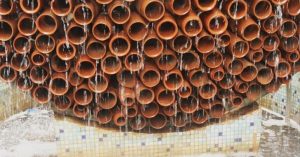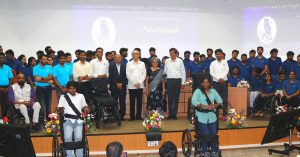Advanced STEM Learning Helps 6000 Students in Govt Schools Innovate, Thanks to One Initiative
L&T’s STEM initiative ‘Engineering Futures’ has now reached 208 government and aided schools, promoting science education through teacher training and infrastructure development. The introduction of STEM labs and DIY kits has sparked innovation in every child, as demonstrated by the impressive projects showcased at the recent STEM fest.
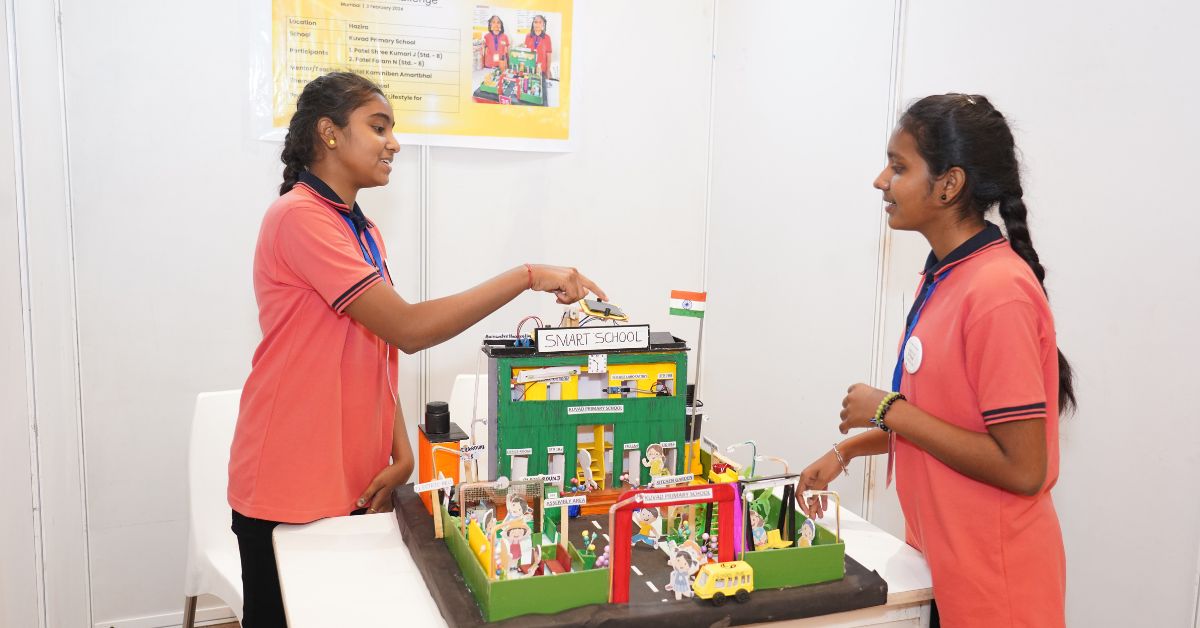
This article has been published in collaboration with Larsen & Toubro.
An agricultural tricycle that can sow seeds, plough and water land; a modern waste segregating system that will tell you which bin you must throw your waste in; a hydro-electric generator that converts water into electricity; an accident prevention system for mountain roads which uses sensors to provide advanced warning in blind spots.
These groundbreaking creations are the result of the ingenuity of finalists, children ranging from Classes 6 to 9, who participated in L&T’s National STEM Challenge — a culmination of the conglomerate’s ‘Engineering Futures’ initiative.
Launched in 2020, this initiative aims to cultivate science, technology, engineering, and mathematics (STEM) interest among school children. By reaching out to schools that lack access to STEM labs, children in remote corners of the country are now able to enhance their scientific knowledge, grasp essential concepts, and develop problem-solving skills for the future.
According to school teachers, the remarkable outcome of this initiative is that even children who typically struggled in exams are now able to unleash their creativity and understand science concepts — something that traditional teaching methods often fall short of achieving.
The challenge winners — Joshwa A and Sivakarthikeyan N from Class 8 at Government High School, Gerugambakkam, Chennai — ingeniously crafted the agricultural tricycle by repurposing an old cycle, scrap metal, and wheels acquired from a local scrap shop. Their teacher, Thenmughil Ramakrishnan, was initially surprised to see the boys transporting scrap materials to their homes daily. It was only later that she discovered they were constructing a device to assist farmers in performing multiple tasks simultaneously.
“These boys were in Class 6 when the pandemic started. That’s when L&T started providing online classes to teach science, arts and maths. The students were given easy ways to make simple projects at home, which kept them occupied while they learnt the important concepts,” Thenmughil tells The Better India.
She adds that despite facing challenges in writing Tamil or English proficiently, these boys exhibit a remarkable understanding of science concepts. They independently constructed the entire device, delving into areas of agriculture, engineering, and beyond — showcasing their adeptness in practical knowledge and hands-on skills.
A total of 24 teams (50 children) from Chennai, Coimbatore, Hazira, Vadodara, Talegaon and Mumbai made it to the finals, which was conducted in Mumbai on 3 February, 2024.
Building STEM activities around existing curriculums
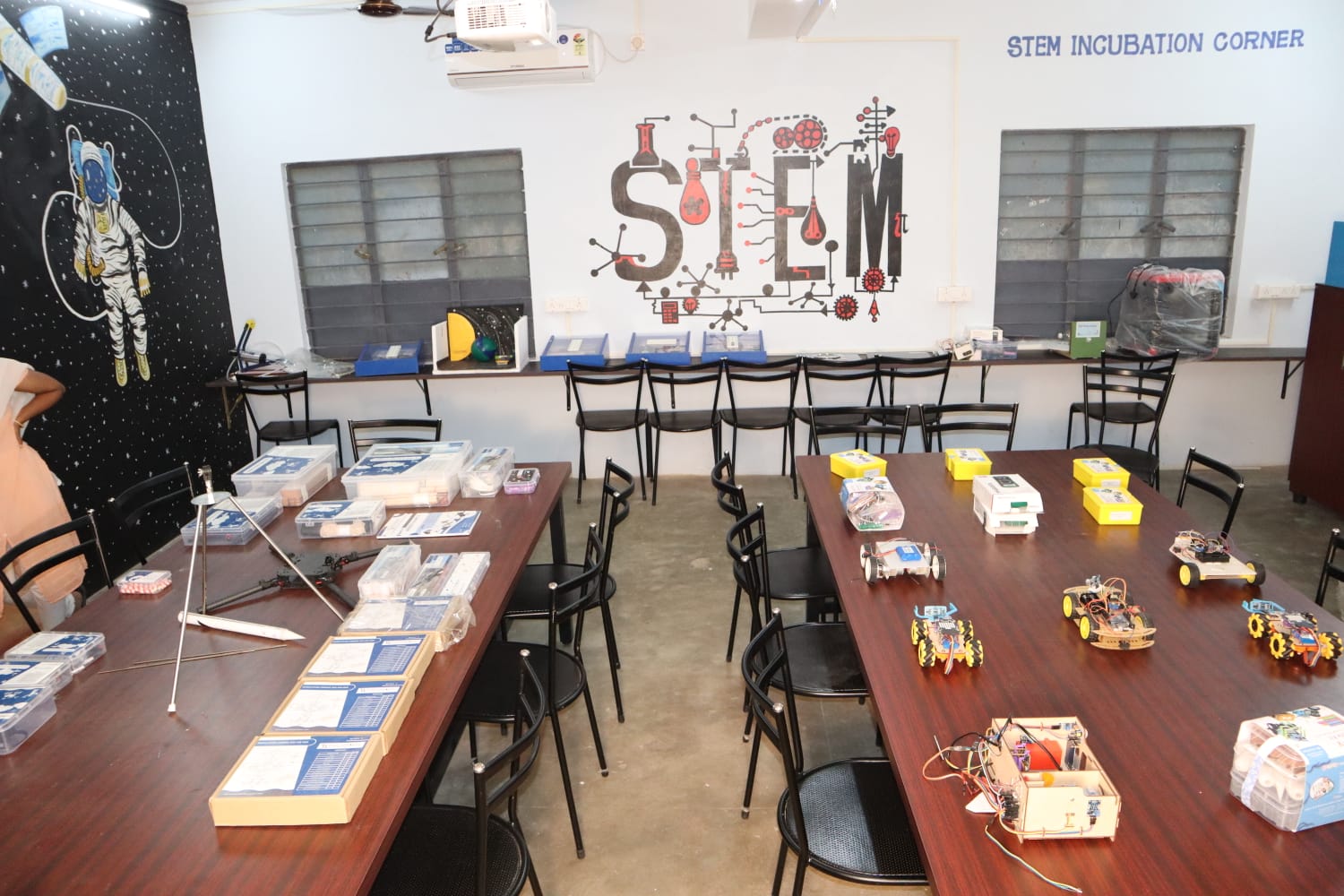
As part of its Corporate Social Responsibility (CSR) initiatives, L&T has been actively involved in the education sector for over three decades. Recognising that nearly 80 percent of future jobs will require science and math skills, L&T aims to address the challenge of limited access and resources in many parts of the country.
Mabel Abraham, Head – Corporate Social Responsibility at L&T, explained to The Better India that the decision to focus on STEM was made in 2019.
L&T has undertaken a comprehensive approach to facilitate access to STEM education in government schools and schools with limited resources. This initiative is designed to bridge the gap and ensure that students have the necessary tools and opportunities to develop skills essential for the evolving job market.
“There are different models when it comes to STEM education, including building science labs, implementing digital classrooms, and providing DIY kits, among other approaches. We did not want to focus on just one model, and instead, we decided on a blended approach, working to address the specific needs of each school as cracking just one piece of the puzzle is not enough,” says Mabel.
Embracing the Smart School concept, L&T initially focussed on furnishing schools with fundamental infrastructure before progressing to the establishment of STEM labs. However, their original plan underwent adjustments due to the onset of the pandemic coinciding with the launch.
Commencing with 65 schools nationwide, it pivoted to online classes and modules in response to the challenges posed by COVID-19. The volunteers distributed WhatsApp videos and assigned children straightforward DIY projects that could be completed using materials readily available at home.
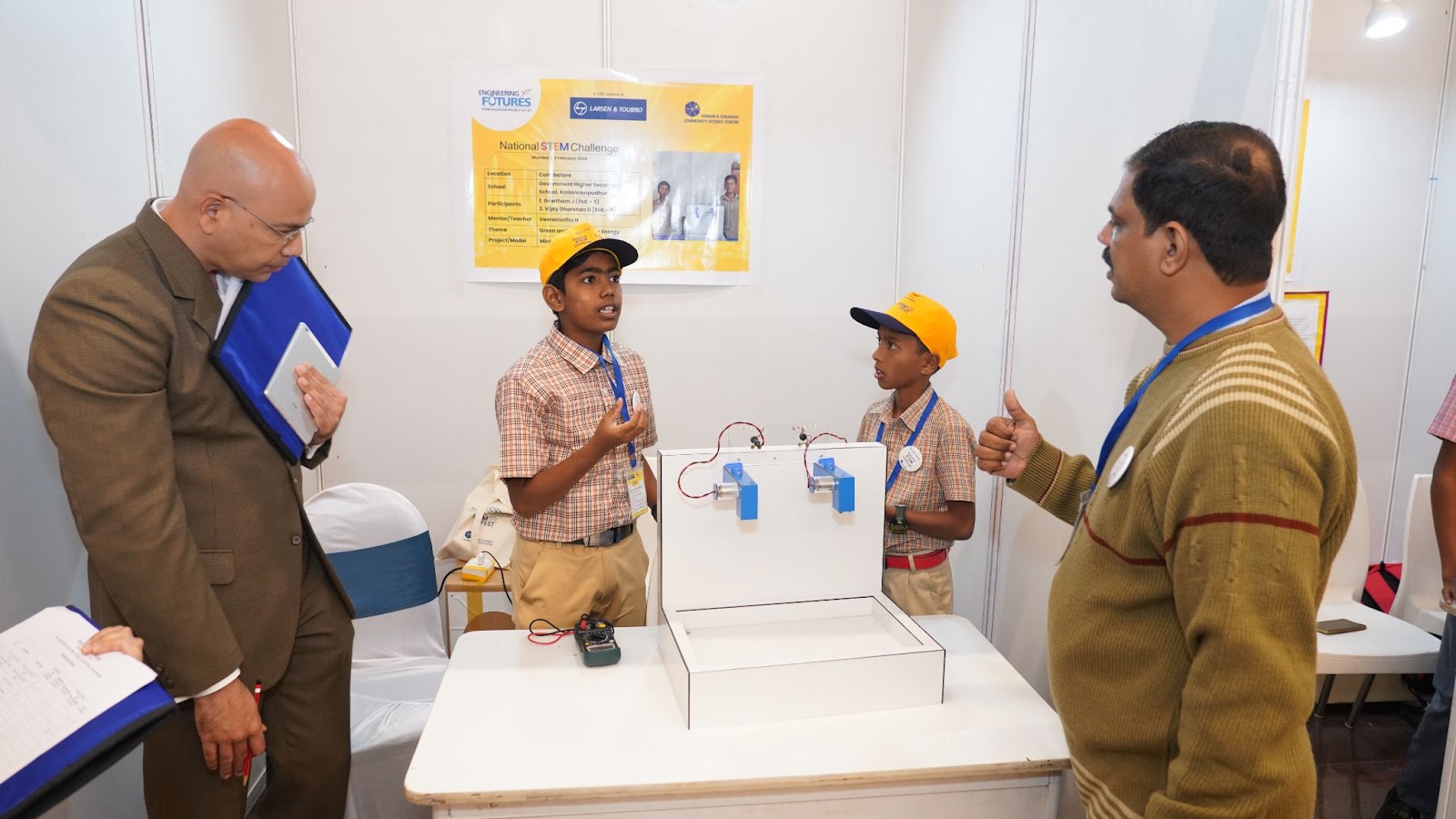
“Children were excited to do the projects and they would share it eagerly. In fact, we even hosted an online science fair to showcase their creations. We were amazed by the projects they came up with; it fired their creativity,” adds Mabel.
L&T collaborates with local NGO partners to implement the programme in selected schools, committing to support these schools for at least three to four years. The initiative works on dual fronts — providing training to teachers in STEM education and building physical infrastructure in schools, including STEM labs or digital classrooms.
The process begins with L&T selecting a school, and conducting an orientation and a needs assessment. A key criterion is the presence of a science teacher, and the initiative is tailored for students in Classes 6 to 9.
Working through NGO partners, L&T delivers training to the district education officer, school principal, and teachers. Quarterly training sessions are conducted for teachers, with an observer present in the classroom to evaluate the effectiveness of teaching and provide guidance on improvement.
This hands-on approach not only equips teachers to impart knowledge effectively but also strives to establish a sustainable model. The goal is to empower teachers to continue delivering quality education independently, even without ongoing assistance from the NGO.
“Our idea is to improve children’s conceptual understanding of science. Based on our observation, many students lose interest in science in Classes 6 to 9. Girl students too face several biases and challenges as STEM courses are not traditionally considered a woman’s domain. If they get a better understanding of scientific concepts through innovative methods, there is a possibility of them choosing a career in science,” adds Mabel.
Adapting to the specific needs and interests of each school management, L&T enhances the physical infrastructure based on demand. What started with 65 schools has now expanded to include 208 schools.
Teachers share that the presence of these models not only allows students to showcase their creativity but also aids teachers in delivering more effective explanations, utilising the visual aids provided by the projects.
“Earlier, we would just explain concepts, with children not being able to see how it works. Through these models and kits, we are able to demonstrate how the concept works, helping in easier understanding. Children also ask more questions. The concept reaches them easily,” says Veeramuthu N, a teacher from Government Higher Secondary School, Kaliannanpudur, Coimbatore.
He adds that L&T has provided them with 75 kits, which include working models, explanatory models and charts. Children are taken to the lab, where they can experiment. Alternatively, teachers also bring the models to class, depending on the concept they are teaching.
In addition, NGO partners — such as the American India Foundation (AIF) and Don Bosco Institute of Technology — offer after-school classes for students. These sessions cover a range of topics, including mobile application development, coding, CNC machining, sensors, map making, 3D printing, and more. The knowledge gained in these classes empowers children to apply these concepts to solve real-life problems they encounter in their daily lives.
Firing the creativity in children
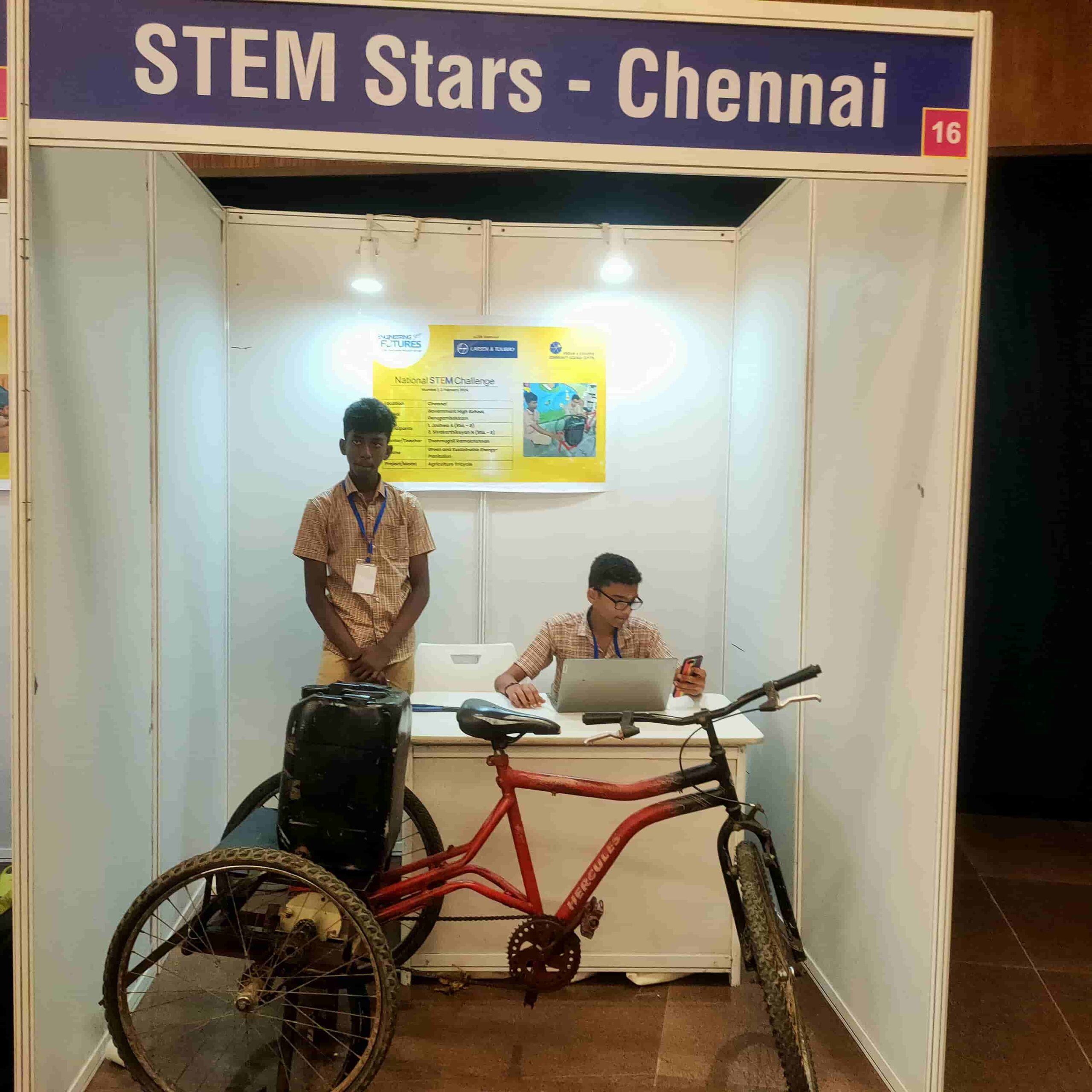
To boost the initiative and provide students with a platform to showcase their talents, L&T initiated STEM fests beginning in October 2023. Over 6,000 students from Classes 6 to 9 actively participated in intra and inter-school level competitions.
The STEM model-making competition featured interesting themes — such as green and sustainable energy, waste management, smart schools, and satellite and launch vehicles. From these themes, 208 teams were selected for the regional level competition, and ultimately, 24 teams from cities — including Chennai, Coimbatore, Hazira, Vadodara, Talegaon, and Mumbai — advanced to the finale in Mumbai.
L&T’s employee volunteers played a crucial role in mentoring and assisting students, helping them refine and perfect their models for the competitions.
The Government High School, Gerugambakkam, Chennai, won the challenge, while the Government High School, Velappanchavudi, Chennai and Shree Kanchanlal Mamawala Surat Municipal Corporation School (Hazira, Gujarat) emerged as the first and second runners-up.
The three winning schools received cash rewards — Rs 50,000 for the national champion, Rs 30,000 for the first runner-up, and Rs 20,000 for the second runner-up — to facilitate the upgrading of their science labs. Additionally, all three winning teams were presented with telescopes, drones and a DIY Robotics Kit, providing them with further exposure to STEM.
As a special opportunity, the winning teams were invited to visit L&T’s tech projects and engage in interactions with the leadership team, enriching their understanding and appreciation of real-world applications in the field.
In a block level coding workshop organised by AIF, Class 7 students — Santhosh M and Yuvan Shankar Raja K from Government High School, Velappanchavadi, Chennai — tackled the topic of waste management.
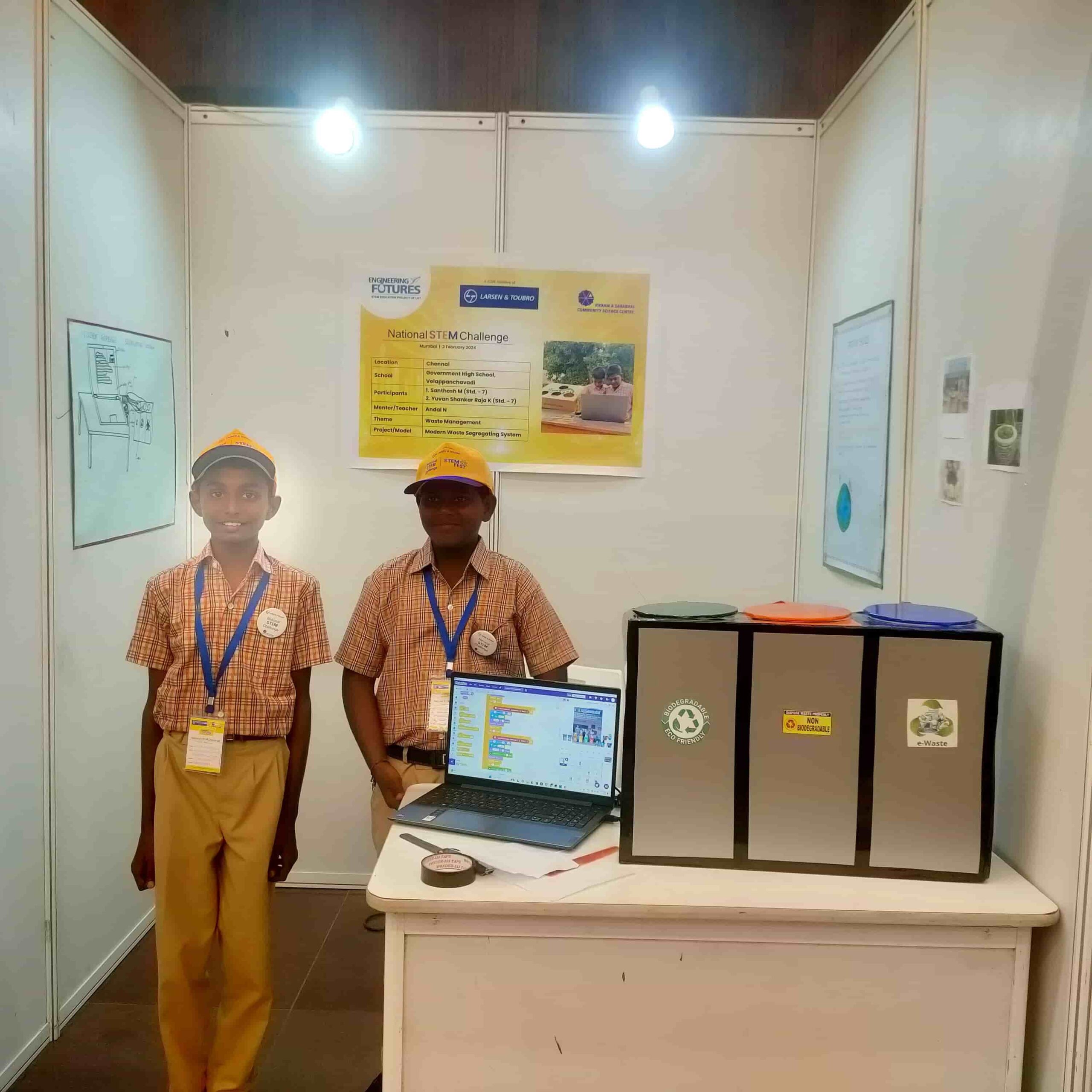
They developed a modern waste segregating system featuring sensors on each bin — designated for biodegradable, non-biodegradable, and e-waste. These sensors guide users on the appropriate bin for their waste disposal. Their innovative approach involves attaching sensors and cameras to each bin, aiming to facilitate waste separation at the source. Biodegradable waste is intended for composting, while non-biodegradable waste is directed towards recycling.
“Currently, only nine percent of waste is recycled. If implemented, our invention can increase the waste recycled and prevent baby sea turtles from having plastic in their stomachs,” shares Santhosh, one of the finalists.
Hailing from a farming background, Apurva Shirsat and Kausar Pathan of the Tulshet Pada Marathi Medium School have innovated a farm protector, which uses two different types of sensors to ensure farm safety without harming animals. Furthermore, Gowtham and Vijay Darshan — belonging to a hilly area with just one bus in the morning — built a hydroelectric generator that can solve the problem of electricity using waste water collected during handwash to generate electricity. If you found our stories insightful, informative, or even just enjoyable, we invite you to consider making a voluntary payment to support the work we do at The Better India. Your contribution helps us continue producing quality content that educates, inspires, and drives positive change. Choose one of the payment options below for your contribution- By paying for the stories you value, you directly contribute to sustaining our efforts focused on making a difference in the world. Together, let’s ensure that impactful stories continue to be told and shared, enriching lives and communities alike. Thank you for your support. Here are some frequently asked questions you might find helpful to know why you are contributing?

According to L&T’s assessment of a sample of 75 schools involved in its initiative, and testing of 625 students, a notable improvement in subject-wise performance was noted. More than 50 percent of the students demonstrated the ability to develop their own projects. Teachers highlight that students — ranging from those seated in the last row to the quieter ones in class — are now able to effectively express themselves through their STEM projects.
Edited by Pranita Bhat
This story made me
- 97
- 121
- 89
- 167





